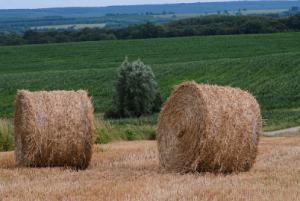A bale wrapper is an agricultural implement used to wrap silage bales in plastic. The machine is used to cover the bales in plastic, thereby ensuring the preservation of the silage. It is an excellent investment for farmers as it reduces the risk of contamination. To learn more about this implementation, read on! This article provides an overview of its uses. Here is a quick overview of the benefits of using a bale wrapper.
 SiloFlex
SiloFlex
Using high-quality film for bale silage production is vital for optimal yield and quality of the ensiled crop. In collaboration with raw material suppliers, film manufacturers create the finest silage films. Leading brands use DOWLEX(tm) Polyethylene Resin to offer exceptional cling, high puncture resistance, low oxygen, water, and permeability. These films also maintain the nutritional value of the ensiled crop.
AgriSeal bale wrap is a three-layer, durable film from Norflex Inc., a Wisconsin-based company founded in 1994 to meet the growing demand for high-quality silage bale wrap. It is formulated for strength and tear resistance and features a 12-month field warranty. In addition, this wrap can withstand extreme temperatures and retain its integrity. SiloFlex bale wraps are also available in a patented version with a moulded edge that prevents ripping during bale handling.
SiloFlex bale wrap is designed with the farmer’s economy in mind. The product is highly affordable yet offers superior tear resistance, UV protection, and tack. Its patented double-sided tack and layered construction provide a strong, airtight seal. It is also made in Canada. It is available in two colours, White (in stock) and Green (preorder).
The students had visited a landfill and a ploughing match, where they saw the waste left behind from using bale wrap. After understanding the material, they began researching its uses in agriculture. The primary goal was to develop a wrap containing rain, snow, and sun. Biostarches were developed by the students in collaboration with local universities. They are currently in talks with a manufacturing company about commercialising the wrap.
SunFilm
The Prog Sunfilm Gold bale wrap is the leading choice in the US. Despite its recent introduction to New Zealand, Sunfilm Gold bale wrap has been used for over ten years. It is a multilayer blown silage film that adheres to various crops. Its plastic core prevents it from collapsing in wet conditions, and its pre-stretch feature allows it to stretch to seventy per cent of its original length.
The reflective white film stretches around bales to form an air-tight tension seal that helps reduce heat build-up and preserve feed quality. SunFilm (r) Stretch film is UV-treated to withstand degradation for up to one year. The film wraps bales tightly, preventing them from catching bugs and keeping them virtually spoilage free. For best results, wrap bales with SunFilm (r). Stretch film at five to sixty per cent over the top of the bale.
A bale wrapper is a farm implement used to wrap silage bales in plastic. These wraps protect silage from moisture and pests. It is a versatile tool, but it’s essential to understand the difference between it and other plastic wraps. We’ll discuss the different types and features to choose the best one. Let’s start with the basic bale wrapper. This tool is usually used on large-scale farms and is a staple for any silage farm.
The idea for this wrap came to students from the St. Thomas Aquinas School. They saw waste material left behind by farmers and went to a ploughing match to see what they could do about it. The students were also inspired by a family member who farms and the waste they see daily. As they investigated bale wrap, they found that it had many shortcomings. For example, the sun, snow, and rain had to keep out. But it was the students’ ideas that led to a sustainable solution.
Another type of plastic wrap is line wrappers. Line wrappers allow you to quickly wrap larger bales, saving money and plastic. Most wrappers have optimum bale lengths of four to six feet. Also, make sure to measure the length of the bale before wrapping. Keep in mind that bales with high moisture will be heavier than others. So, use a suitable wrapper to prevent this from happening. If you’re unsure how to choose a wrapper, check out the size specifications for the bale.